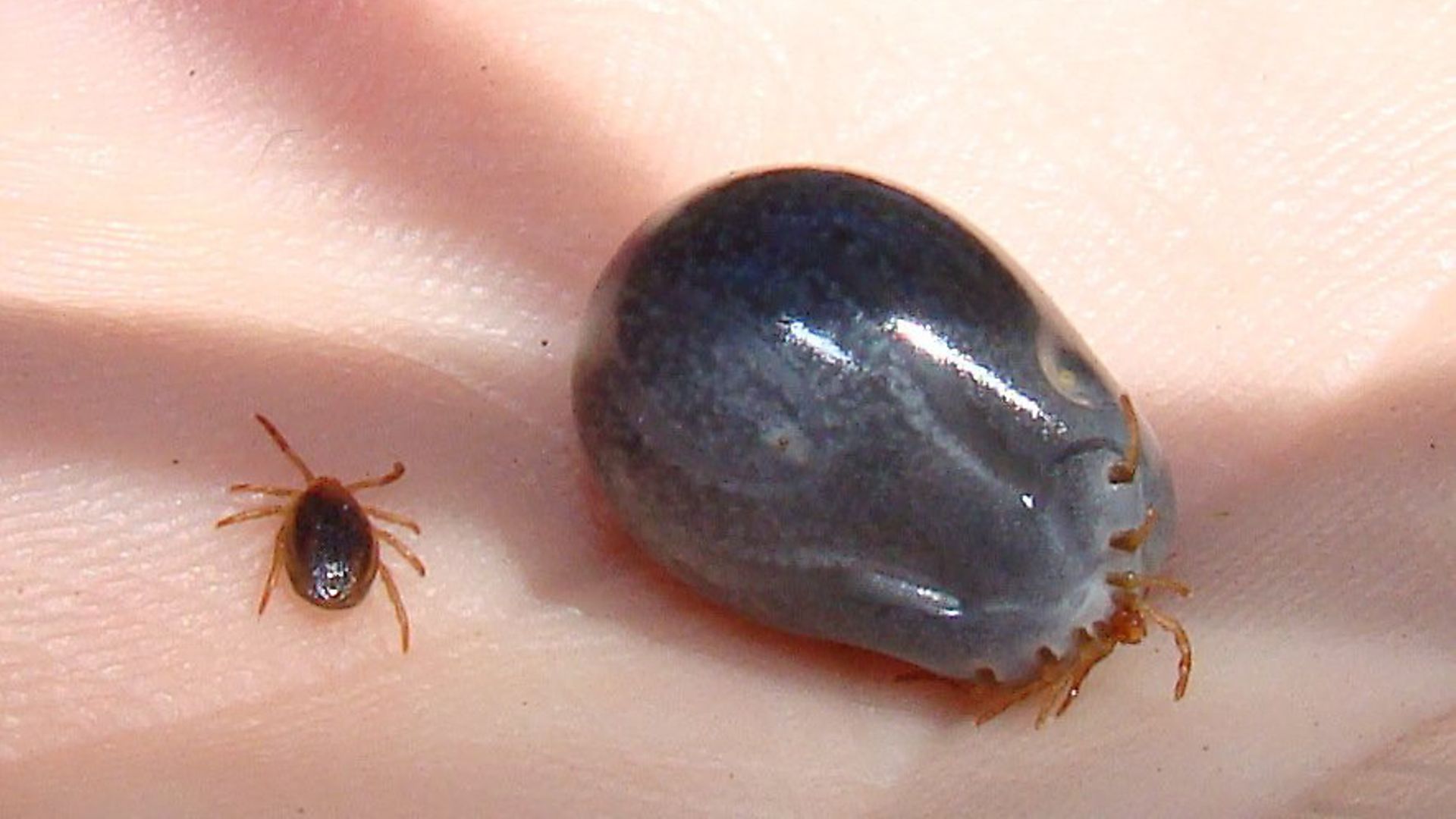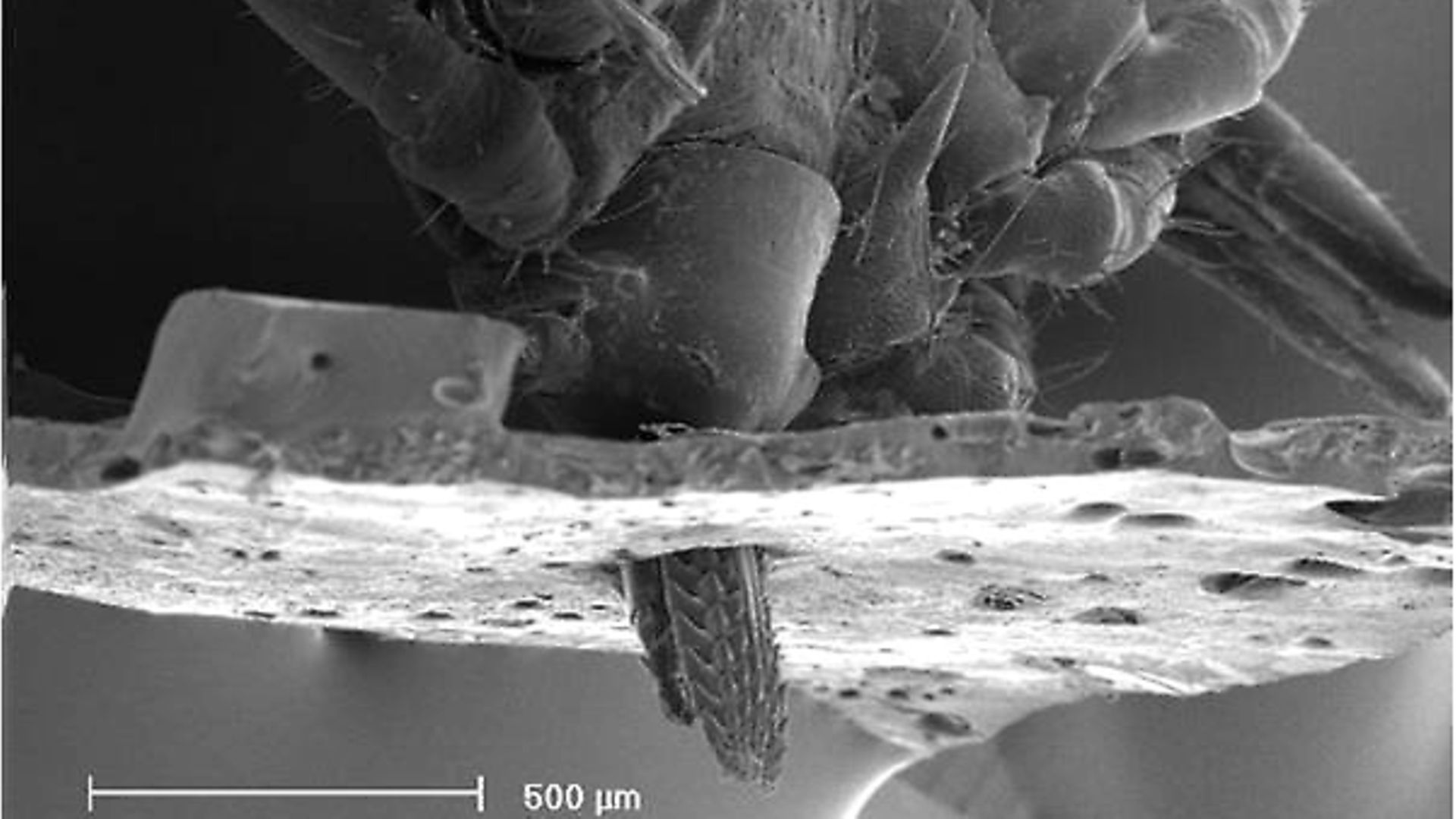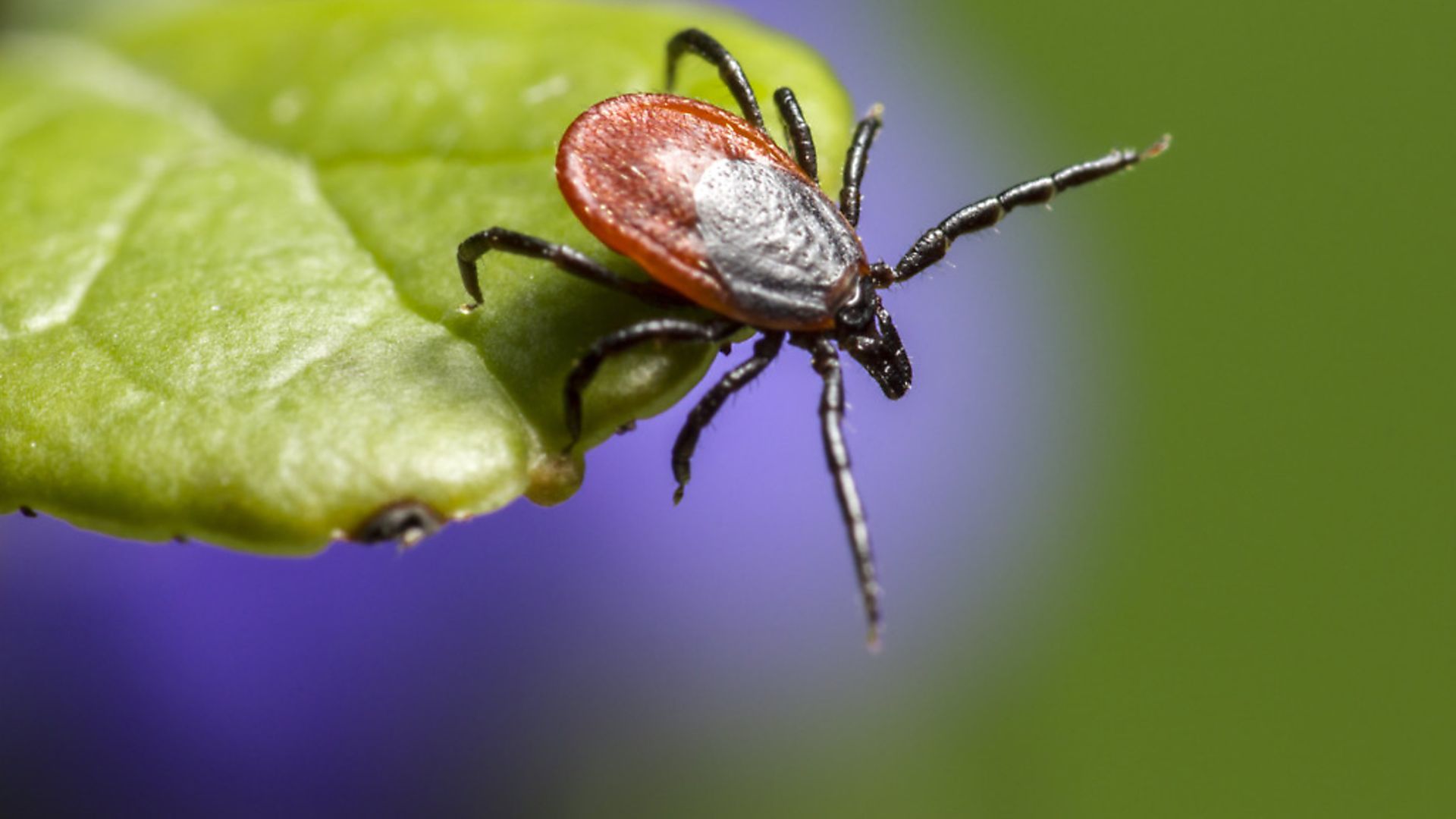Tim Pilbeam shares the symptoms of Lyme disease, the tests available with which to diagnose it, and the various methods of dealing with the disease once you know you have it
 credit: Archant
credit: Archant
Last issue, I shared my experience with Lyme disease. I was bitten by a tick over 20 years ago, did nothing about it, and now am faced with a disease that could have a serious impact on the quality of my life for as long as I live. If I was more informed, a two- to four-week dose of daily antibiotics after the event may have stopped the Borrelia bacteria taking control on my body. If only. Hindsight and all that…
It is called ‘the great pretender’ because it mimics so many other complaints or diseases. I have previously discussed my more severe symptoms – major joints aching or throbbing, migrating from one limb to another – but it is the persistent fatigue and headaches that really wear me down. I am an active person, playing plenty of sports and feeding my passion for adventure with or without the rifle.
Despite UK blood tests informing me I do not have the disease, I know from endless research that there is a high chance that the result is a false negative. You should be aware that even though you can receive results that tell you that you don’t have the disease, these may be incorrect. Welcome to the world of Lyme.
I finished last month sharing how hard it is to discuss the symptoms with a local GP, and it is very difficult for them to diagnose Lyme in isolation, and if not treated quickly, it is very hard to totally eradicate. So now, part two is all about what I have done so far. Please note that I am not medically trained, so if I am a little too simplistic or not 100% medically correct, then I apologise. My aim is purely to raise the awareness of Lyme. If you are bitten by a tick, I hope by the end of this article that you will be equipped to make a better decision than I did all those years ago. If, like myself, you have long-term chronic Lyme, or you think you may have it, this is my experience. I hope it helps.
I previously mentioned that I visited a Swedish homeopathic practitioner who, within 10 minutes of seeing me, told me I had Lyme. He emphatically informed me that taking even the more powerful antibiotics would not cure a long-term sufferer like me (referred to as Lymies in the US). However, shortly after a bite, they can be very effective.
He made me up a cocktail of eight different pills and a disgusting potion, all of which work on the medical complications that Lyme causes. Wormwood to kill the Borrelia, Huperzine A to help the brain, Curcumin to take care of the inflammation in muscles, Serrapeptase to help the Fibromyalgia and headaches, Magnesium Malate for the Fibromylagia and fatigue, Collagan 1 and 3 to repair the nerves, muscles and ligaments tissues that the parasite lives on and a disgusting herb mix (red clover, echinacea, andrographis, licorice, Lactuca and more) to further fight the Borrelia and to reduce the pain. I am not advocating alternative medicine, but as I have a chronic infection and there are not many proven cures, I will try anything!
symptoms of lyme disease
After three months, I was a new person. All my symptoms had disappeared! He tested me again, and to his surprise, he felt the disease had gone, something that normally takes six to 12 months; but had it completely disappeared? One thing was for sure, whatever he’d prescribed had made a huge difference, and so I continued taking the concoction of pills for another two months before stopping. Perhaps this whacky Swedish practitioner who used dousing rods to detect diseases, did know a thing or two!
Nine months later, before a film trip to Croatia, the aching knees and fatigue started to return. After 20 years of suffering, I knew the symptoms. Bearing in mind I was hunting mouflon in the Dalmation mountains, involving some reasonably extreme physical hunting, I needed to do something quickly. I resumed the original course of pills for two months and while they did not make an immediate difference, I started to improve, both physically and mentally.
That was over two years ago, and since then, the symptoms have tended to flare up every six months or so, and I would take the pills again. Recently however, the symptoms are becoming more regular. Do I need to change the pills? Why are they becoming less effective? Will I ever be rid of the disease or, more worryingly, will it get worse?
 credit: Archant
credit: Archant
testing for lyme disease
Perhaps the Borrelia bacteria has become resistant to my concoction of pills, or has my body become used to the alternative remedies? Whatever it is, it is time to research what other choices are out there. In the autumn of 2017, I took the plunge, letting modern science do the work. Black or white, yes or no! I wanted a second opinion and wanted to know exactly what was in my body, and the only way was to have extensive blood tests. As my doctor admitted, he knew very little about the disease, but if I wanted to, he would refer me to the tropical and infectious diseases hospital in London. It would take at least three months before I could get an appointment, and then a few further months for the multitude of tests to be done. After reading John Caudwell’s story about his 19-year-old son being bedridden from Lyme, and how he went to Germany to gain a clear diagnosis, I decided to do something similar at a cost of over £800. I needed to know, once and for all.
A week later, I was back in the surgery, sitting next to a young nurse who was carefully filling up several glass test tubes with my blood. That afternoon, they were picked up by a special courier, together with a comprehensive questionnaire about my symptoms, where they would analyse the samples based on their knowledge and understanding of Lyme and the multitude of co-infections. Within 24 hours, they arrived at Armin Labs, based in Augsburg, Germany for in-depth analysis. I waited, worried and deliberated for a few days; what was I actually achieving? I already know I have Lyme – well sort of! If I have it, there is little chance of eradicating the disease. At least I will know where I stand.
Ping! Five pages of medical facts and figures arrived by email. I read it all, and the findings are conclusive: “The results indicate a past infection with Borrelia burgdorferi, but also a chronic active infection with Ehrlichia/Anaplasma + Chlamydia pneumoniae + CoxSackie Virus Type B1.”
My course of pills over the past 18 months had made a huge dent on the activity of the Borrelia, so my Swedish friend did know what he was doing, but I also had three so-called ‘co-infections’. There are over 300 co-infections that can be transmitted from a tick, as well as the several strains of the Borrelia bacteria. My next step was Google! I wish I had never bothered. These co-infections can cause so many different complications, and when mixed up with Borrellia, they all conspire together. Great!
So what do they do? Ehrlichia causes high fever, fatigue, muscle aches and headaches. Chlamydia pneumoniae (no guys, it is not what you think!) mainly affects the respiratory tract, causing a runny nose, fatigue, sore throat, worsening coughs that linger for months and headaches. CoxSackie Virus Type B1 causes problems around the heart (Bornholm disease), fever, fatigue, chest pains, skin rashes and pneumonia, and so the list goes on and on.
At least now I have some scientific results. These are medical tests that cannot be questioned, so all I need to do is work out what course of action to take. I phoned a dietician, who is a Lyme specialist, and shared my results with her, only to hear a sharp intake of breath.
“Oh Tim, you must be suffering from continuous flu and colds, together with chronic fatigue and aches and pains in joint and muscles.” While I haven’t suffered with any major flu bugs, other than the occasional cold, for several years, everything else she mentioned was spot on.
“Well, your autoimmune system is running at a very low level, much lower than the average person,” she told me. After further discussions, I soon realised why it takes me so long to recover from extreme physical exertion, something that I do rather like to do. If I really overdo it, my body just shuts down for a few days in protest, giving it time to recuperate. As an active sportsman, that’s all I need! However, I was informed that keeping the body in a good physical state does help the body fight Lyme, possibly keeping it under control, but was also told that the symptoms will probably worsen.
 credit: Archant
credit: Archant
how to manage lyme disease
I know what I have, but where am I now? Despite realising that over the past 10–15 years the periods of fatigue were becoming more regular and tougher to shake off, I only started this journey of discovery thanks to the Swedish homeopath in late 2015. The blood tests from Germany state exactly what I have floating around in my body, and I know I will probably never be cured of the disease. I have to manage not only the Lyme Borrelia and its horrible co-infections that the tick has introduced into my blood stream, but also myself mentally and physically.
“Are you Lymey?” is a question my wife asks me if I am ratty and short-tempered with her. The fatigue, brain fogging and aching joints come and go with the wind. There are not many days that I feel 100%, so I accept that I will be constantly tired, and rely on a positive mental attitude to keep my energy levels as consistent as possible. In business, my meetings are short and to the point as I struggle to keep my concentration for any length of time. I try to do my office work and attend meetings in the morning, and keep the afternoons open for more physical tasks on the farm, or admin jobs that require less mental energy.
My mind and body is telling me not to do anything, just lay down and chill, but it doesn’t actually have too much of an effect on my physical performance. I recently went for a run, but within a mile, my legs and knees ached so much that I had to stop. Thankfully, that is rare, but I am noticing that I am not able to do as much as I used to. I try not to push myself too hard, and if I do, I accept that within two days, I will feel really lousy for a while, before recovering. I am carefully managing myself, monitoring how I feel all the time. If I feel really bad, I will not exercise. My sporting colleagues have noticed that I am not as active or as physical as I used to be (I have a reputation for giving more than I get), little do they know! One day they will find out.
Diet is also an important consideration. Without going into detail, alcohol, gluten and sugar, can make the condition flare up, as the Borrelia parasites somehow react to it. Myself, I am fine with having a few alcoholic drinks, but in excess, I suffer. Holidays can catch me out. If I drink steadily for a few days, my body spirals into a cycle of total all over fatigue and my joints just throb all day, so I manage the quantities I drink, perhaps mixing in more water or fruit juices than usual. With regards to sugar and gluten, I am just conscious of what I eat, and accept that sometimes, I will feel lousy. I may have to stop eating and drinking these more problematic foods, but for now I am able to put up with the side affects. Becoming a monk is not me, but you never know – watch this space!
Most of my friends, business colleagues and, currently, my family are not aware that the active and generally energetic person they see and know is hiding a dark secret from them. The cocktail of pills come out of the cupboard several times a year, but I am aware that they may lose their effectiveness, so I am constantly looking for alternative remedies.
I will shortly be making a film on Lyme for the Fieldsports Channel, which may include an interview with Michael Thick, past chairman of the BDS. When asked about the awareness of the disease in the countryside he said: “There is a lack of knowledge in the general community, stalkers have no excuse not to know [about Lyme], but often they don’t. The perception of the disease is: ‘I will readily see a tick on the skin,’ but actually you can’t, and: ‘whatever happens, I will see the target-shaped rash appear on the skin, and in which case, I know I will do something,’ but the disease it just not like that.”
As a clinician, he says that humans react to Borrelia in many different ways. Some may have a rash and some do not. Some have the symptoms immediately after a bite, while others may have a delayed reaction and for some it may lay dormant.
Many people are sick without the disease being recognised. He continues: “A message to the general public is, if you feel ill after going out into the countryside, particularly into long grass, then you should think that you may have encountered a tick and you may have encountered Lyme disease. It may be as vague as muscle aches or headaches, you might think you have something wrong with your heart, the presentations (symptoms) are vast and various. You should take it seriously and talk to your GP and ask for a blood test.”
 credit: Archant
credit: Archant
How to deal with suspected Lyme disease
To recap: sheep, dogs, cats and birds can carry ticks, not just deer. 30% of ticks carry Lyme. There is a good chance you will not know if you have been bitten by a tick. If you think you have been bitten or you have the target-shaped rash, see a doctor.
If you have symptoms, see a doctor. Your doctor will probably be unfamiliar with the disease, so do some research first to help. There is more than a 30% chance that the UK blood test for Lyme will be inaccurate (false negative result). If you have long-term or chronic Lyme, it is questionable that there is a cure.
I wish I could finish this article on a positive note, but I cannot. Recently, I heard that there is a French company who claim to have a cure for Lyme, but that may not be effective for the long-term sufferer. I also hear that a German medical centre for tick-borne diseases can carefully heat the body up to a dangerous level, destroying a long-term infection of Borrelia.
In America, a recognised treatment is intravenous antibiotics over a long period of time, which to me is rather scary, but does it totally eradicate the disease? I can keep taking stronger antibiotics, but I am not comfortable doing so, hence experimenting with alternative medicines.
I am in my mid-50s, so I need to find something if I want to enjoy the rest of my life without feeling all washed up and miserable. I can still run several miles a week, play competitive sports and enjoy 50-mile cycle rides with my mates. I fight Lyme by being strong both physically and mentally. For me, it is all about managing the disease and my body and if it stays as it is, I may be thankful, but if it worsens, then that is another challenge.
 credit: Archant
credit: Archant
To read the first installment in this two-part series, click here
 credit: Archant
credit: Archant